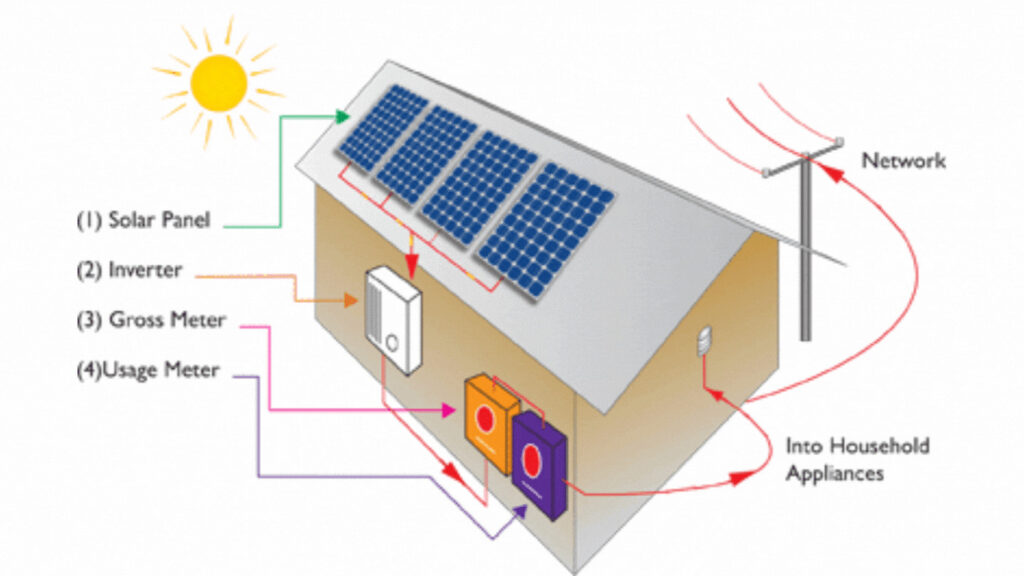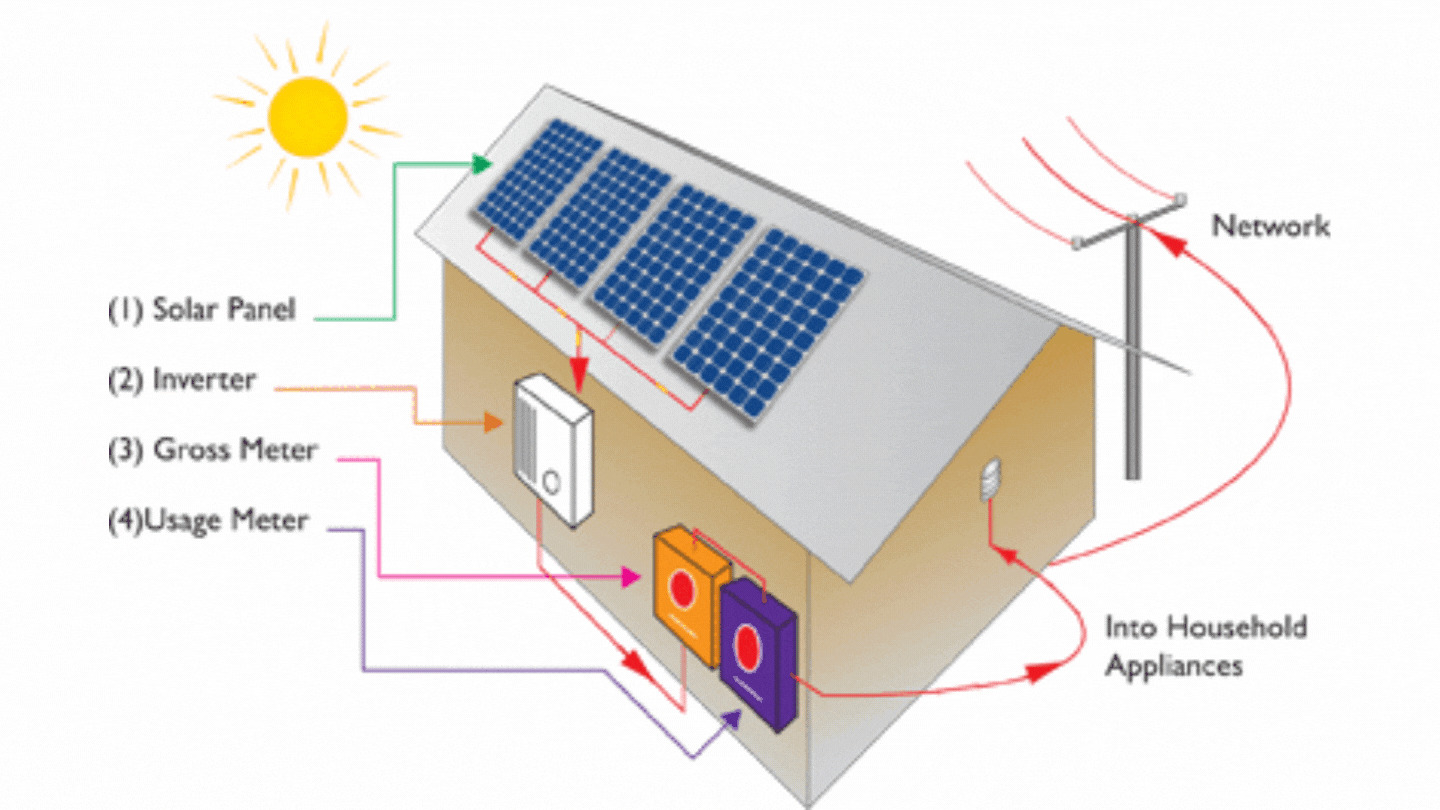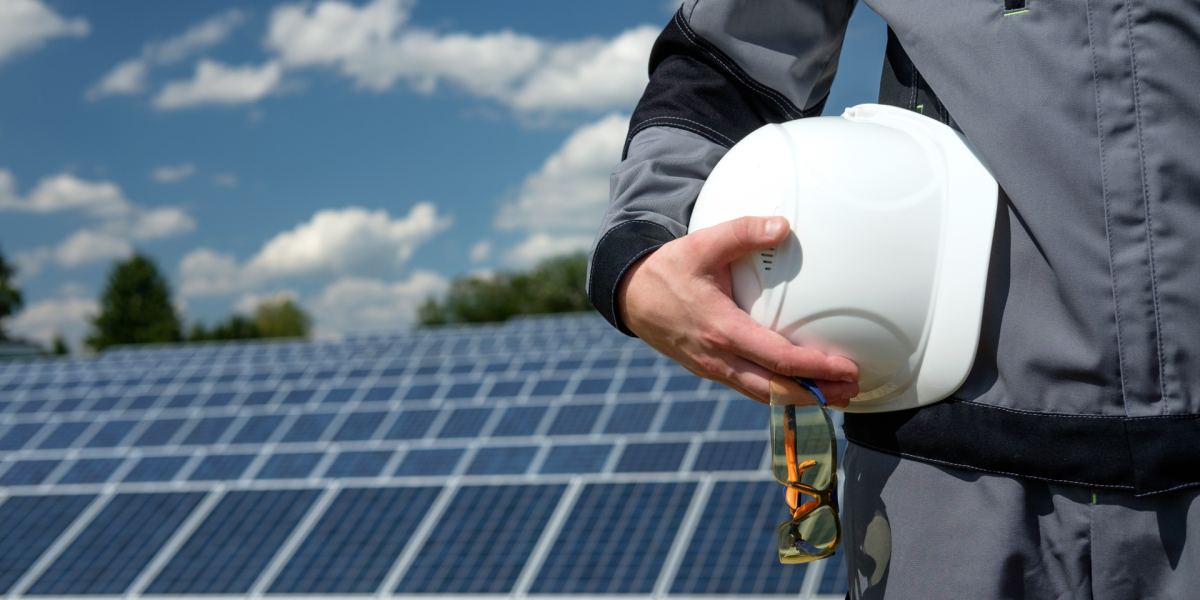Solar panels are made up of semiconductive silicon cells that are usually encased in a metal frame with tempered glass. Due to the photoelectric effect, photovoltaic cells generate a flow of electric charge inside the solar panel when exposed to sunlight. This current flows through a network of wires that connects arrays of solar panels. The inverter system receives power from the solar panels. The inverter is a device that converts direct current (DC) electricity to alternating current (AC) electricity that matches the utility grid’s frequency and can be used to power your home!
In a grid-tied system, the inverter is “tied in” or interconnected to the electrical system of the house, building, or facility usually in the main electric service panel, although some systems are tied into “sub” or distribution panels, pending certain criteria are met. During daylight hours, the AC electricity output by the solar inverter(s) is back fed onto the main panel, and that electricity is used up by any loads or demand (lights, AC, fans, machinery, anything!).

There are many panel manufacturers that build panels containing both mono and polycrystalline wafers to form solar cells, capable of harvesting energy from a wider spectrum of light. If space is limited on your roof or project site, a higher-efficiency, monocrystalline panel may be preferred, and could result in a better return on investment (ROI).
A lower-cost, slightly less efficient polycrystalline panel, on the other hand, might be the best fit for your needs. Make sure to inquire about the type of cell in your solar system design (“mono or poly”), as this distinction may have an impact on the aesthetics and economics of your project.
It’s important that your solar panel array(s) are installed in areas that receive good insolation (sun exposure) throughout the day, free from as much shading from trees or neighbouring obstructions as possible. This will ensure your system is as productive as possible, given the site conditions.




